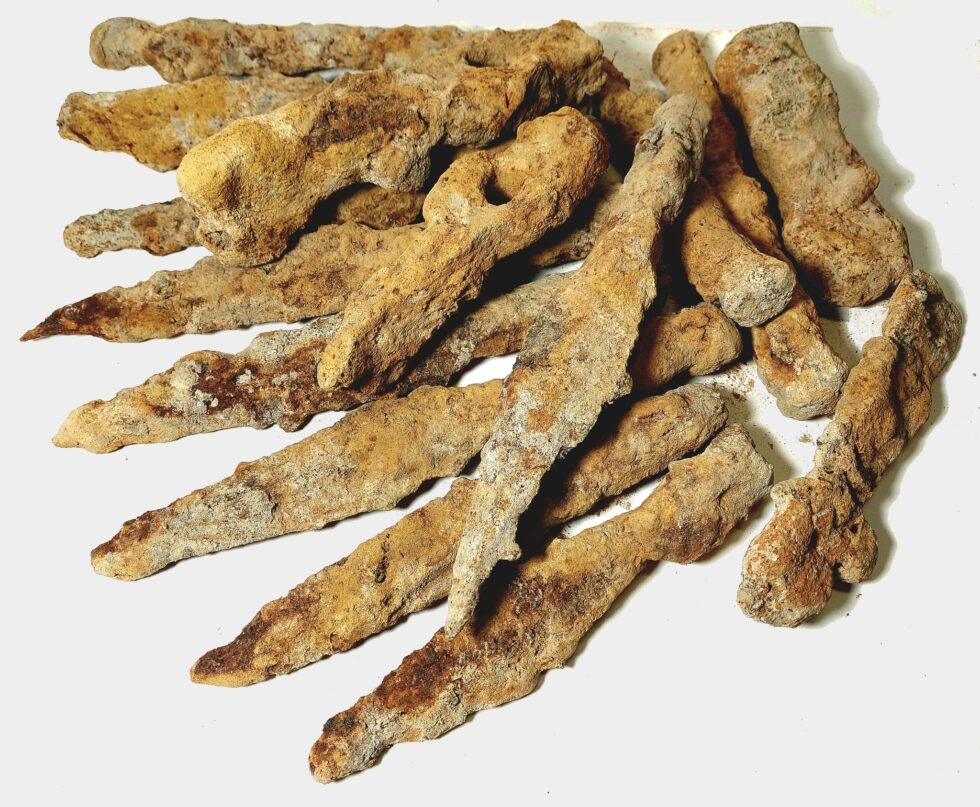Roman-era “barbarian weapons” found in Polish forest
Fifteen iron weapons likely belonging to “barbarian tribes” during the Roman Empire have been discovered in a forest in eastern Poland. The find, described by a local museum as “sensational”, includes spearheads, axes and three objects that are yet to be identified.
The items were found in a swampy area of a forest near the town of Hrubieszów. At first, due to the very heavy corrosion covering the metal, further mixed with sand and mud, it was difficult to determine what the objects were.
“Several kilograms of shapeless muddy corroded iron were safely packed up and taken out of the forest to clean and determine the nature of the find,” Dariusz Kopciowski, the local conservative of monuments, told local news outlet Lublin112.
Once they began cleaning them, the group that had found the items quickly realised they were archaeological in nature and contacted the the municipal museum in Hrubieszów.
“We are most likely dealing with weapons used by barbarian tribes during the Roman Empire, perhaps with the Przeworsk culture,” announced the museum in a statement.
That is the name given to a culture that inhabited the area of what is now Poland between the third century BC and fifth century AD. They are named after the Polish town of Przeworsk, near which the first artefacts identified with the culture were found.
“This is undoubtedly one of the most interesting discoveries of recent years,” said the museum, which noted there there are no known archaeological sites in the area of the discovery.
Given the number of items discovered together and the fact no bone or pottery fragments were found nearby, “everything indicates that someone deliberately collected these elements, packed them in a bag or other container, and then threw them into the swamp”, says the museum.
Now the fifteen weapons found in the forest will be further examined and a more precise estimate of their age and provenance will be determined. In the spring, the researchers plan to carry out a more detailed survey of the location where they were found.

